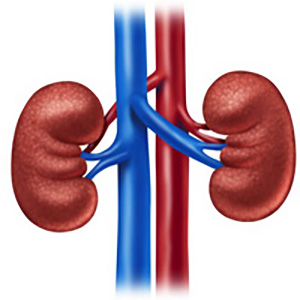 Smart Citations
Smart CitationsSee how this article has been cited at scite.ai
scite shows how a scientific paper has been cited by providing the context of the citation, a classification describing whether it supports, mentions, or contrasts the cited claim, and a label indicating in which section the citation was made.
Evaluation of risk factors for recurrent renal stone formation among Saudi Arabian patients: Comparison with first renal stone episode
Objectives: We evaluated the baseline characteristics, and risk factors of renal stone recurrence among Saudi Arabian patients after successful primary stone treatment. Materials and methods: In this cross-sectional comparative study, we reviewed the medical records of patients who presented consecutively with a first renal stone episode from 2015 to 2021 and were followed-up by mail questionnaire, telephone interviews, and/or outpatient clinic visit. We included patients who achieved stone-free status after primary treatment. Patients were divided into two groups: group I (patients with first episode renal stone) and group Ⅱ (patients who developed renal stone recurrence). The study outcomes were to compare the demographics of both groups and to evaluate the risk factors of renal stone recurrence after successful primary treatment. We used Student’s t-test, Mann Whitney test or chi-square (x2) to compare variables between groups. Cox regression analyses were used to examine the predictors. Results: We investigated 1260 participants (820 males and 440 females). Of this number, 877 (69.6%) didn’t develop renal stone recurrence and 383 (30.4%) had recurrence. Primary treatments were percutaneous nephrolithotomy (PCNL), retrograde intrarenal surgery (RIRS), extracorporeal shock wave lithotripsy (ESWL), surgery and medical treatment in 22.5%, 34.7%, 26.5%, 10.3%, and 6%, respectively. After primary treatment, 970 (77%) and 1011 (80.2%) of patients didn’t have either stone chemical analysis or metabolic work-up, respectively. Multivariate logistic regression analysis revealed that male gender (OR: 1.686; 95% CI, 1.216-2.337), hypertension (OR: 2.342; 95% CI, 1.439-3.812), primary hyperparathyroidism (OR: 2.806; 95% CI, 1.510-5.215), low fluid intake (OR: 28.398; 95% CI, 18.158-44.403) and high daily protein intake (OR: 10.058; 95% CI, 6.400-15.807) were predictors of renal stone recurrence. Conclusions: Male gender, hypertension, primary hyperparathyroidism, low fluid intake and high daily protein intake increase the risk of renal stone recurrence among Saudi Arabian patients.
Downloads
Citations
10.17816/PED15165-78
How to Cite

This work is licensed under a Creative Commons Attribution-NonCommercial 4.0 International License.
PAGEPress has chosen to apply the Creative Commons Attribution NonCommercial 4.0 International License (CC BY-NC 4.0) to all manuscripts to be published.

 https://doi.org/10.4081/aiua.2023.11361
https://doi.org/10.4081/aiua.2023.11361




